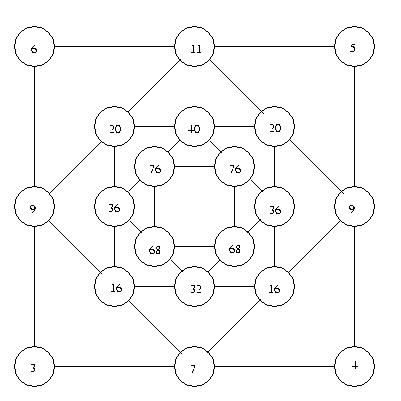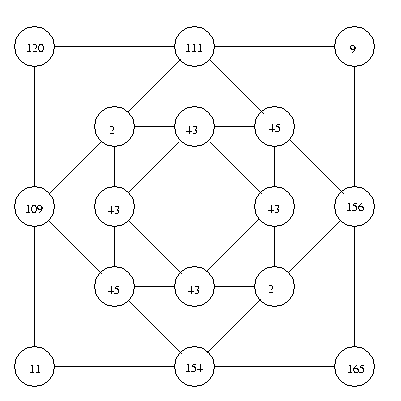Number squares
Problem
This challenge is a bit different to my usual ones. I used it many years ago when I wanted some quite young children to do lots of adding in a more fun way.
Image

|
You start with four numbers at the corners of a square. Then you add up the numbers at the two ends of each side and put the total in the middle of that side. So in my example 3 + 5 = 8, 5 + 4 = 9, 3 + 1 = 4, 1 + 4 = 5. |
Image

|
These four new answers give us the corners of a new square. The corners are 8, 9, 5 and 4. |
Image

|
These four new numbers are added up and the answers put in the centre of the edges of this new square. And so on and so on. |
The diagram gets more and more complicated, growing as shown below:-






There is not much more to say, apart from have a go yourself. Use any starting numbers at the corners. Can you estimate what the size of the last four numbers will be?
What would happen if you used different shapes, for example pentagons or hexagons?
What would happen if you used subtraction, always taking the smaller from the bigger?
What would happen if you multiplied? Divided? What ...??
Getting Started
You could try altering just one of your starting numbers to see what effect this has. Can you predict what will happen before you try it?
You could set yourself some targets for the middle numbers and see how close you can get.
What are the similarities and differences betweeen the different squares you produce?
Can you explain these similarities and differences?
You might find a calculator handy!
Student Solutions
These two solutions came from West Flegg Middle School. The first square uses addition and the second uses subtraction. Do you see the patterns in the numbers? Did anyone else end up with all the same numbers in the centre?


